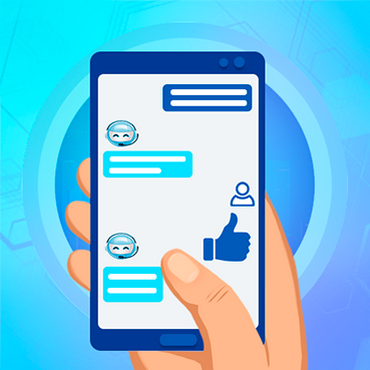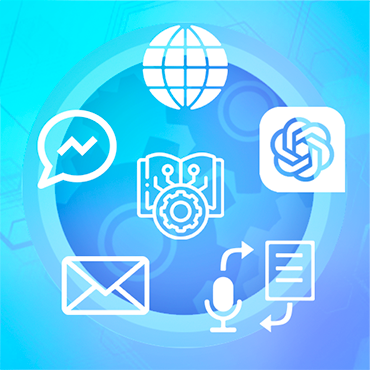AI-Powered Chatbot Assistant
Custom chatbot solutions with seamless implementation
This chatbot was developed for the customer support department. It already empowers our client’s business by providing automated and accurate answers to questions, resulting in a 36% reduction in staff workload. A high level of response personalization was achieved through appropriate settings and learning from the client's historical data.

 Business Challenge
Business Challenge
The European retail company had problems with inefficient query handling, delays in responses, and escalating support costs. These costs included expenses related to hiring and training additional support agents, as well as potential overtime payments during peak periods. The existing support infrastructure may have struggled to scale up or down in response to fluctuations in customer inquiries. The lack of scalability hindered the company's ability to effectively manage peak periods of demand without compromising response quality. As a result, our client faced the challenge of improving the work of the support department and reducing its maintenance costs.
 Solution Overview
Solution Overview
To address this challenge, our company developed an AI-driven chatbot assistant leveraging GPT technology – a powerful AI model from OpenAI capable of generating human-like text and machine learning techniques. The chatbot was trained on a vast dataset of historical customer interactions, allowing it to learn various styles of communication and appropriate responses to different queries. This enabled the chatbot to understand the context and engage in meaningful conversations with customers.
Optimized Infrastructure: The chatbot was seamlessly integrated into the Retail company's server environment to ensure stable and high-speed performance. An optimized infrastructure facilitated the 24/7 availability of the chatbot, providing uninterrupted customer support.
As a result, our AI-driven chatbot assistant proved to be instrumental in elevating the quality of customer service, alleviating the support department's workload by 36%, and delivering greater customer satisfaction for the Retail company.


 Technical Details
Technical Details
In our endeavor to realize the project's objectives, we harnessed a diverse array of advanced technologies to implement the AI-based chatbot solution.
Text Preprocessing and Text Vectorization: before feeding text data into the GPT model, we performed comprehensive text preprocessing using various techniques to enhance the input quality. This involved tasks such as text vectorization methods and word embeddings based on LLMs to convert the processed text into numerical representations that the model can understand and work with.
Preliminary Search by Tokens: to efficiently locate the nearest values during a preliminary search, we employed vector-based indexing techniques. By breaking down the text into tokens (words or subwords) and indexing them, we accelerated the process of identifying relevant documents or responses. This preliminary search helped narrow down the search space and speed up the retrieval of potential matches, ensuring quicker response times to user queries.
Generating Prompts and Relevance: when generating prompts for the GPT model, we strategically selected portions of documents that were most relevant to the user's request. This relevance was determined based on various factors, including semantic similarity, keyword matching, and contextual analysis.
System Prompt Groups: to further enhance the quality and relevancy of responses, we established a set of system prompt groups. Each group consisted of carefully curated prompts that covered different domains or topics related to customer queries. By providing a diversified set of initial prompts, we aimed to guide the GPT model's generation process toward more accurate and relevant outputs. These system prompt groups acted as guidelines for the model, steering it in the right direction while maintaining flexibility in its responses.
By combining these technical elements, we ensured that the chatbot could consistently provide high-quality, contextually relevant responses to a wide range of customer inquiries. This not only improved customer satisfaction but also optimized the overall customer service experience for the Retail company.
Technology Stack

Python

MongoDB

Vosk

JavaScript

GPT

